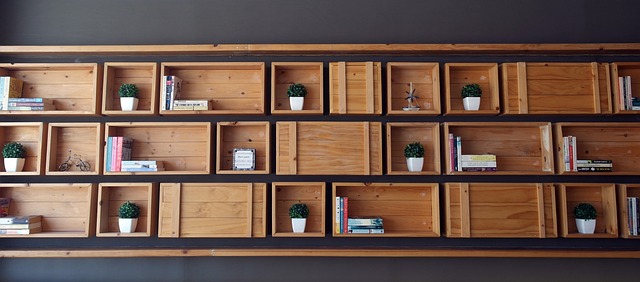Tropical, succulent, and exotic plants bring a vibrant aesthetic to offices but require specific care tailored to their unique origins. Mimicking their natural habitats with warm temperatures, bright but indirect sunlight, well-draining soil, and consistent monitoring of light, temperature, humidity, and watering is crucial for their success. Effective office plant upkeep includes regular watering, fertilizing, misting, pruning, and proper ventilation to prevent fungal diseases, ensuring these plants thrive and remain vibrant additions.
“Elevate your office space with expert care for tropical, succulent, and exotic plants—a unique twist on traditional greenery. This guide delves into the intricate needs of these specialized species, offering insights on optimal growth environments in offices. From understanding their distinct characteristics to essential care practices like watering, lighting, and soil selection, we provide strategies for thriving plants.
Additionally, discover how to combat common pests and diseases afflicting these delicate florae, ensuring your office remains a vibrant sanctuary of plant upkeep.”
Understanding Tropical, Succulent, and Exotic Plants: Their Unique Needs
Tropical, succulent, and exotic plants bring a vibrant splash of color and texture to any space, making them popular choices for office decor. However, their unique aesthetic comes with specific care requirements that differ from common houseplants. These plants hail from diverse global habitats, from lush rainforests to arid deserts, each with its own microclimates and ecological niches. Understanding these origins is crucial for providing the right conditions for optimal growth.
Their “exotic” nature isn’t just about their appearance; it translates into specific needs regarding light exposure, humidity levels, and soil composition. Tropical plants, for instance, thrive in humid environments with consistent moisture, while succulents are adapted to dry conditions and can store water in their leaves or stems. Exotic species may demand specific temperature ranges and varying amounts of direct sunlight. Effective office plant upkeep involves creating an environment that mimics these natural habitats as closely as possible, ensuring these delicate plants flourish rather than wither.
Creating the Ideal Environment for Optimal Growth in Office Spaces
Creating the ideal environment for tropical, succulent, and exotic plants in office spaces involves understanding their specific needs. These species thrive in environments that mimic their natural habitats, which often include warm temperatures, bright but indirect sunlight, and well-draining soil. Office spaces can provide the perfect setting for these plants if properly managed. Regular monitoring of light levels, temperature, and humidity is crucial for optimal growth. Utilize grow lights to supplement natural sunlight during winter months when daylight hours are shorter. Ensure adequate ventilation to maintain healthy air quality and prevent fungal diseases.
Office plant upkeep includes consistent watering, fertilizing, and pruning. Tropical plants generally prefer moist soil, so regular misting or use of humidifiers can be beneficial. Succulents and exotic species may require less frequent watering but should still be checked regularly to avoid over- or underwatering. Fertilization during the growing season promotes robust foliage and blooming. Pruning helps maintain shape and encourages new growth, ensuring these plants remain vibrant additions to any office environment.
Essential Care Practices: Watering, Light, and Soil Considerations
Proper watering is a cornerstone of successful office plant upkeep, especially for tropical, succulent, and exotic species that may have distinct water needs. These plants thrive on consistent moisture but cannot tolerate sitting in waterlogged soil. Therefore, it’s crucial to water them deeply but infrequently, allowing the top layer of soil to dry out slightly between waterings. Understanding each plant’s specific preferences is vital; some may prefer regular misting for added humidity, while others, like succulents, store water in their leaves and require less frequent watering.
Light requirements vary widely among these plant types, with tropical plants often favoring bright, indirect light and exotic species adaptable to lower light conditions. Succulents, on the other hand, tend to flourish in sunny spots. When incorporating these plants into office spaces, position them near windows or use artificial lighting to ensure they receive the appropriate light levels for optimal growth. Additionally, choosing the right soil mix is essential; well-draining potting mixes with a balance of organic matter and perlite or sand are ideal for most tropicals and succulents, fostering healthy root development and preventing waterlogging.
Common Pests and Diseases: Prevention and Effective Treatment Strategies
Tropical, succulent, and exotic plants bring a unique charm to any space, whether in a home or office. However, they require meticulous care to thrive, including vigilant monitoring for common pests and diseases that can quickly affect their health. Prevention is key when it comes to office plant upkeep. Regular inspections allow for early detection of any issues. This includes checking for webs from spider mites, tiny insects that suck sap from plant tissues; mealybugs, which leave a waxy coating; and scale, small crusty insects that feed on sap.
Treating these problems effectively involves using appropriate methods tailored to each pest. For instance, insecticidal soap or neem oil can combat many soft-bodied insects like aphids and spider mites. Powdery mildew, a fungal disease characterized by white, powdery spots, can be managed with fungicides and ensuring adequate air circulation. Effective treatment requires quick action once issues are identified, as these pests and diseases can spread rapidly if left unchecked, impacting not just the affected plants but others nearby.
In conclusion, expert care for tropical, succulent, and exotic plants involves understanding their unique requirements, creating the right environment, and practicing essential care. By mastering watering, light, and soil considerations, as well as implementing effective pest and disease prevention strategies, you can ensure thriving office plant upkeep. These steps will not only beautify your workspace but also contribute to a healthier, more productive atmosphere.
